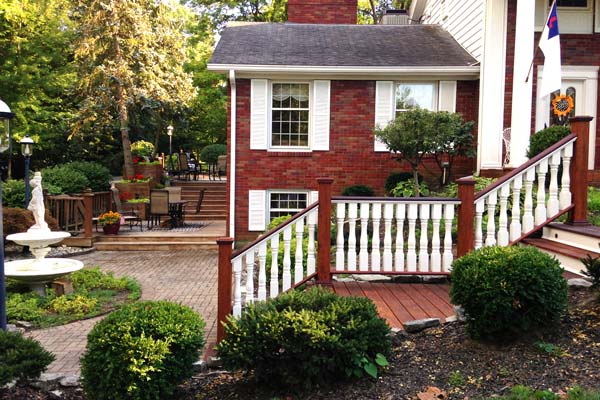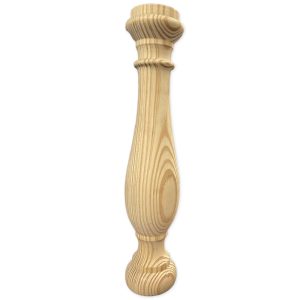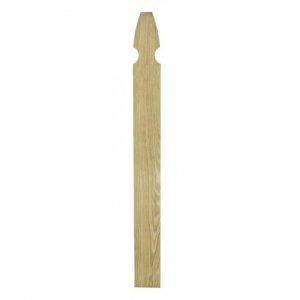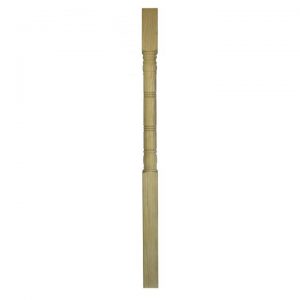An architect, carpenter, or contractor may refer to “balusters” while designing and building a staircase or outdoor patio deck. You might ask, “What’s a baluster?” Americans interchange the words “baluster” and “spindle”, although the industry-specific term for the decorative supports within a staircase is technically called a “baluster”.
The average homeowner may not know the difference between a baluster, spindle, upright, or picket. Essentially, all of these terms refer to the thin vertical posts within a handrail system (or “balustrade”, see below).
Balusters are the closely spaced supports used to hold up a waist-high handrail, safely containing people inside a staircase or patio deck. They are practical and decorative, providing style and support to the rail system.
Balusters are attached to either the floor or secondary support called a base rail. Generally, they are spaced according to the width of the baluster’s base, although contractor codes apply to the spacing between each baluster.
Short and decorative, balusters can be made of wood, stone, iron, or any material that is strong enough to provide support. Traditionally turned on a lathe, balusters are used indoors or outdoors within a staircase, balcony, deck or patio railing, furniture, parapet, and other architectural structures.
The first balusters were designed with a pronounced bulbous pomegranate-shape near the base of the column which is why they were named balaustro, Italian for “wild pomegranate flower”.
Selecting a baluster style is based on the design or historic influence of the home. Since balusters have been used for hundreds of years, it’s possible to find a style of every era of building construction.

Spindles
The thinner a baluster becomes, the more it resembles a spindle. The simple “spindle baluster” is a style of baluster found in early American homes. The informal term, spindle, was adopted because it resembles the tool used to spin wool into yarn which was a common household object during the Colonial era.
Thinner with fewer embellishments, wood spindles are turned on a lathe. Its design is simpler and more elegant than the heavier elaborate balusters of European buildings.
Pickets
Pickets are rustic square or rectangular-shaped posts (like picket fences). Pickets are flat pointed boards used in porch and fence design and are often crudely formed and unsanded. This term is not usually used for indoor construction or the posts within a balustrade.1
Balustrade
A balustrade describes a group of balusters equally spaced within a handrail (top) and base rail (bottom). Simply put, it’s the term for a row of balusters. Some refer to an entire railing system as the balustrade.
Banister
Many people call the entire balustrade system a “banister”, however, technically a banister is only the handrail. It is the part of a staircase you see people slide down in the movies.
Newel Post
Newel posts are not the same as a baluster as they are larger supporting posts positioned at the ends and turns within a staircase. A Starting Newel is the first large post of the staircase located at the bottom of the stairs.
A Landing Newel is positioned at the top of the stairs and also where there is a change of direction in the staircase. Newel posts are topped with a cap, sometimes flat, rounded, or pyramid-shaped.
At S&L Spindles, not only do we have spindles, but we also have deck posts, fence pickets, handrails, and much more! Take a look at our products and don’t hesitate to send us your questions or comments or give us a call for more information.









